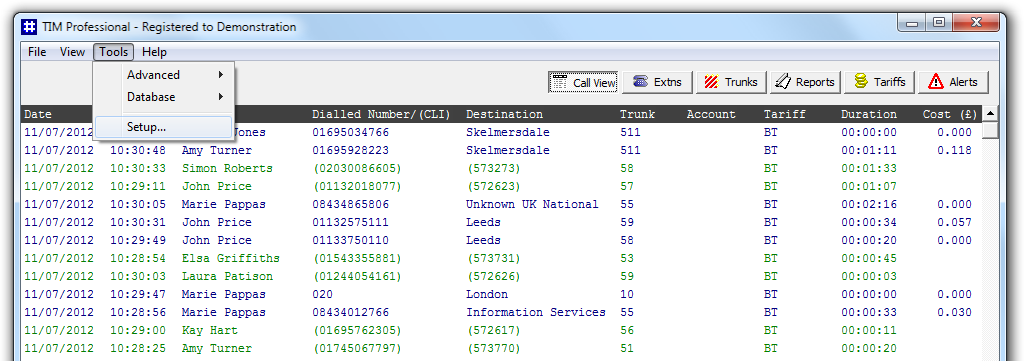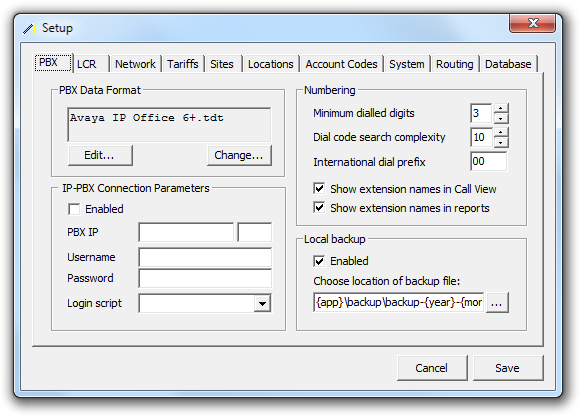To access the Setup screen, click on the button from the top-left menu bar, as shown below:

A new window will open, displaying the following configuration options:

| Tab | Description |
|---|---|
| PBX | Contains the connection parameters for your telephone system. |
| LCR | Allows you to set up your least-cost routing digits and point them to specific tariffs. |
| Network | Allows you to configure your web, mail and Telnet server settings. |
| Tariffs | Allows you to localise the tariffs in order to ensure the cost is applied correctly. |
| Sites | Allows you to configured the system to receive data from more than one telephone system; however, we strongly recommended our TIM Plus or Enterprise products if you have more than one telephone system. |
| Locations | Allows you to assign custom names to specific or ranges of dialled numbers. |
| Account codes | Allows you to add or remove account codes and their associated names. |
| System | Allows you to set general system parameters, e.g. VAT, currency, Live stats etc. |
| Routing | Allows you to assign multiple tariffs to different extension and trunk numbers. |
| Database | This option was introduced purely for diagnostics and it is no longer in use. |
The main configuration file
TIM Professional stores all its configuration settings into a file, named main.cfg, which is located by default in {app}\tim\config\main.cfg and it consists of a line-by-line list of settings. For a full list of configuration file options, please visit the Configuration File Options section.
Labels: